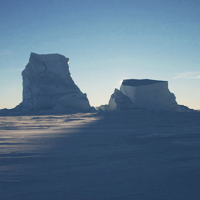Presentation and introduction to the topic of antarctic ice-mass balances and the improvement of its estimate for the past 5 years.
For further reading please see:
Sasgen, I.; Konrad, H.; Ivins, E.R.; van den Broeke; M.R.; Bamber, J.L.; Martinec, Z.; Klemann, V.: Antarctic ice-mass balance 2002 to 2011: regional re-analysis of GRACE satellite gravimetry measurements with improved estimate of glacial-isostatic adjustment, The Cryosphere Discuss., 6, 3703-3732, doi:10.5194/tcd-6-3703-2012, 2012.
http://www.esa.int/Our_Activities/Observing_the_Earth/Space_for_our_climate/Clearest_evidence_yet_of_polar_ice_losses
[easyrotator]erc_29_1357146720[/easyrotator]

